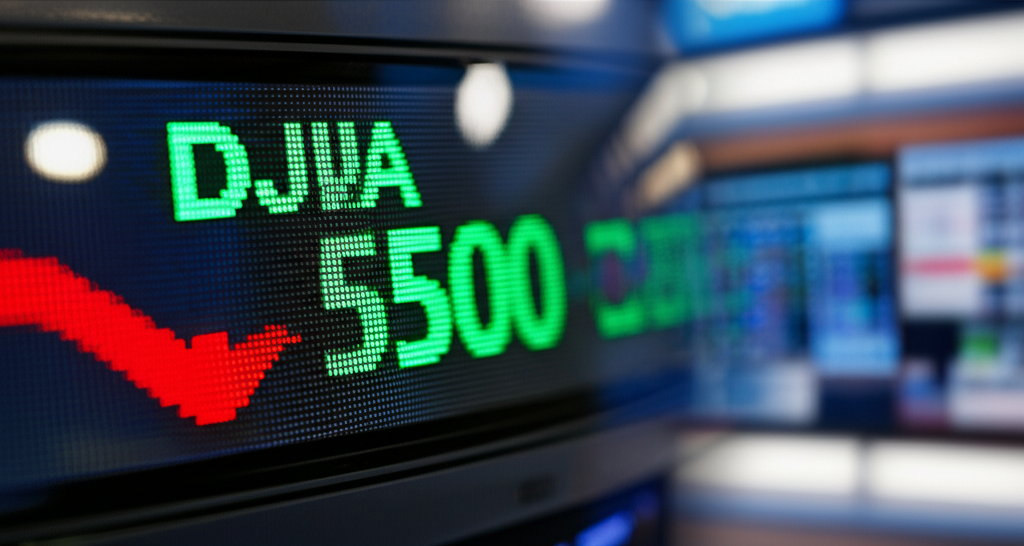Dow Jones Slumps in Risk-Off Trade Amid Middle East Escalation
In a significant display of market sensitivity to global geopolitical events, the Dow Jones Industrial Average experienced a notable slump, driven by a pronounced shift towards “risk-off” sentiment among investors. The downturn was largely attributed to escalating tensions in the Middle East, underscoring how deeply interwoven international stability is with the health of global financial markets. This movement saw investors rapidly retreating from perceived riskier assets, like equities, in favor of safer havens, reflecting growing anxieties over potential broader instability.
The concept of “risk-off” trade describes a market environment where investors prioritize capital preservation over growth and high returns. When geopolitical or economic uncertainties rise, market participants tend to sell assets deemed volatile or exposed to economic downturns – such as stocks, particularly those of companies heavily reliant on global trade or consumer spending – and reallocate their capital into assets considered more stable and secure. These typically include U.S. Treasury bonds, gold, the Japanese Yen, and the Swiss Franc. The recent Middle East developments, characterized by heightened regional hostilities and an unpredictable security landscape, have provided a potent catalyst for this defensive posture. Concerns range from potential disruptions to global oil supplies, given the region’s critical role in energy production, to the broader implications for international trade routes and supply chains. Such uncertainties translate directly into a reluctance to hold equities, leading to sell-offs across major indices.
For the Dow Jones, an index comprising 30 large, publicly traded U.S. companies, a slump indicates a widespread decline in investor confidence across a significant segment of the American economy. While tech-heavy indices like the Nasdaq Composite might be more susceptible to interest rate changes, the Dow, with its mix of industrial and financial giants, often reflects broader economic health and investor sentiment towards established businesses. The recent dip suggests that even robust, blue-chip companies are not immune to the ripple effects of international conflict, as the potential for disrupted global trade, increased commodity prices, and dampened consumer sentiment weighs heavily on corporate outlooks. This dynamic is particularly pertinent for younger investors, who might be grappling with how external events, seemingly distant, can directly impact their portfolios and long-term financial planning. Understanding the interplay between geopolitics and market movements is crucial for making informed decisions, even for those with a diversified, long-term strategy.
The escalation in the Middle East has reignited fears of a broader conflict, prompting market analysts to reassess growth forecasts and risk premiums. Investors are not just reacting to current events but are also pricing in the potential for future instability, which could manifest in higher energy costs, supply chain disruptions, or reduced global demand. The immediate impact often sees sectors like defense and energy experiencing upward pressure due to perceived demand, while others like consumer discretionary or technology, which thrive in stable growth environments, face headwinds. This differentiation underscores the complex nature of market reactions to geopolitical shocks, where some areas may unexpectedly benefit while others suffer. The flight to safety also typically pushes bond yields lower as demand for government debt increases, and strengthens safe-haven currencies, creating a complex web of interconnected financial movements that reflect global apprehension.
Looking ahead, market participants will be keenly observing developments in the Middle East, as any de-escalation or further intensification could dictate the next major move for global equity markets. The current risk-off environment is a stark reminder that while economic fundamentals are crucial, external shocks, particularly those involving critical geopolitical regions, can quickly override other market drivers. For investors navigating this volatility, maintaining a diversified portfolio and a long-term perspective remains paramount, though the immediate period is likely to be characterized by heightened caution and continued sensitivity to geopolitical headlines.





